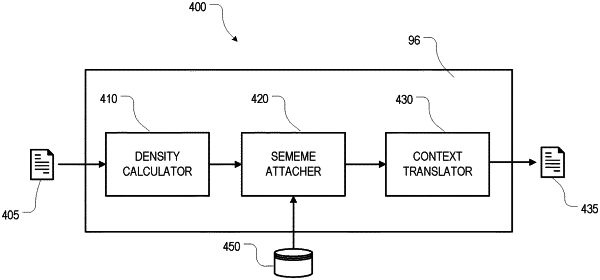| CPC G06F 40/58 (2020.01) [G06F 40/284 (2020.01); G06F 40/30 (2020.01); G06F 40/45 (2020.01); G06F 40/51 (2020.01); G10L 15/26 (2013.01)] | 10 Claims |

|
1. A machine translation system, comprising:
a ChatOps system, the ChatOps system adapted to receive a natural language input text from an end user and to generate one or more executable commands from the natural language input text, the ChatOps system comprising:
a density calculator, the density calculator adapted to:
tokenize the natural language input text into a plurality of word tokens;
calculate a part of speech (POS) density for the plurality of word tokens in the natural language input text;
calculate a knowledge density for the plurality of word tokens in the natural language input text;
level the calculated knowledge densities by POS; and
calculate an information density for the plurality of word tokens in the natural language input text using the POS density and the leveled knowledge density;
a sememe attacher adapted to generate one or more corresponding sememes for one or more of the plurality of word tokens using their respective information densities; and
a context translator adapted to translate the natural language input text into the one or more executable commands using the corresponding sememes, wherein the context translator is adapted to:
divide the natural language input text into a plurality of smaller chunks by stop words, the plurality of smaller chunks including one or more word tokens having one or more corresponding sememes attached thereto;
generate a semantic context for one or more of the smaller chunks using the one or more corresponding sememes, including:
cluster the word tokens using the corresponding sememes;
determine a sense for the clustered word tokens;
merge the sense with the corresponding sememes to generate a semantic context for one of the chunks; and
using the semantic context to translate the chunk; and
translate the natural language input text into the one or more executable commands using the semantic context.
|